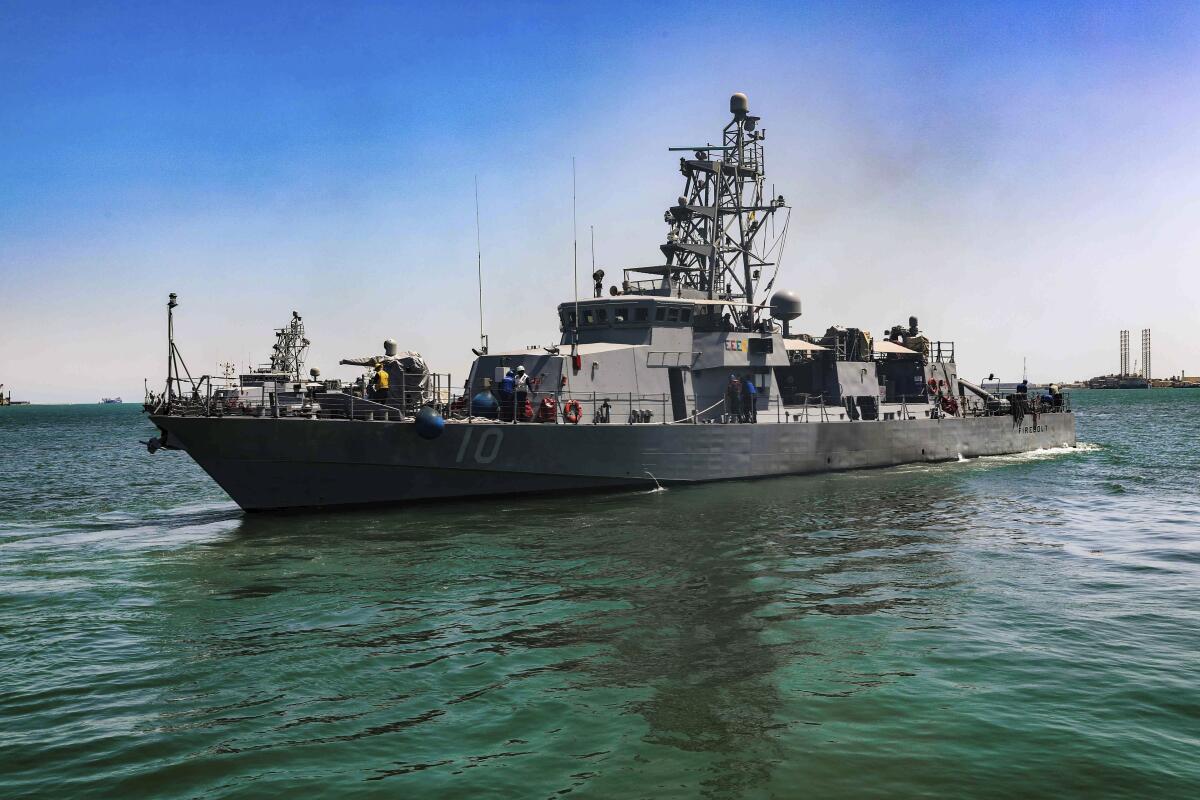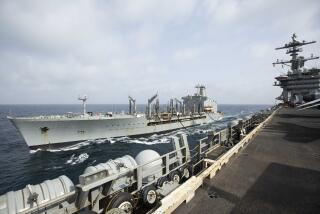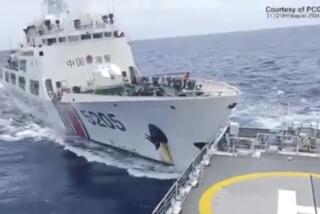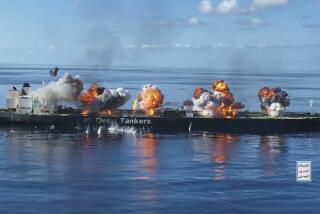U.S. Navy fires warning shots in 2nd tense encounter with Iran this month

DUBAI, United Arab Emirates — An American warship fired warning shots when vessels of Iran’s paramilitary Revolutionary Guard came too close to a patrol in the Persian Gulf, the U.S. Navy said Wednesday.
The Navy released black-and-white footage of the Monday night encounter in international waters in the northern reaches of the Persian Gulf. In the footage, lights can be seen in the distance and what appears to be a single gunshot can be heard, with a tracer round racing across the top of the water.
Iran did not immediately acknowledge the incident, which marked the second time the U.S. has accused the Revolutionary Guard of operating in an “unsafe and unprofessional” manner this month after tense encounters between the forces had dropped in recent years.
The Navy said the USS Firebolt fired the warning shots after three fast-attack Revolutionary Guard vessels came within 200 feet of it and the U.S. Coast Guard patrol boat Baranoff.
“The U.S. crews issued multiple warnings via bridge-to-bridge radio and loud-hailer devices, but the [Revolutionary Guard] vessels continued their close-range maneuvers,” said Navy Cmdr. Rebecca Rebarich, a spokeswoman for the Mideast-based 5th Fleet. “The crew of Firebolt then fired warning shots, and the vessels moved away to a safe distance from the U.S. vessels.”
She called on the Revolutionary Guard to “operate with due regard for the safety of all vessels as required by international law.”
A recording of Iran’s foreign minister offering a blunt assessment of diplomacy and the limits of the country’s power has caused a stir.
“U.S. naval forces continue to remain vigilant and are trained to act in a professional manner, while our commanding officers retain the inherent right to act in self-defense,” she said.
The last time a Navy vessel fired warning shots in the Persian Gulf in an incident involving Iran was in July 2017, when the USS Thunderbolt, a sister ship to the Firebolt, fired to warn off a Revolutionary Guard vessel. Regulations issued last year give Navy commanders the authority to take “lawful defensive measures” against vessels in the Mideast that come within about 100 yards of their warships.
While that may seem far to someone standing at a distance, it’s incredibly close for large warships, such as aircraft carriers, that have difficulty in turning quickly.
Regarding a previous encounter April 2, footage released by the Navy on Tuesday showed a Revolutionary Guard ship cutting in front of the U.S. Coast Guard’s Monomoy, causing the latter vessel to come to an abrupt stop with its engine smoking.
Without vaccines, more Iranians will die and coronavirus infections from Iran will spread to other countries in the region.
The Revolutionary Guard also did the same with another U.S. Coast Guard vessel, the Wrangell, Rebarich said. Such close passes risk collisions.
The April 2 interaction marked the first “unsafe and unprofessional” incident involving the U.S. and Iranian maritime forces since April 15, 2020, Rebarich said. However, Iran had largely stopped such incidents in 2018 and in nearly all of 2019, she said.
The Navy recorded 14 such incidents in 2017, 35 in 2016 and 23 in 2015.
The incidents at sea almost always involve the Revolutionary Guard, which reports only to Supreme Leader Ayatollah Ali Khamenei. Typically, they involve Iranian speedboats armed with deck-mounted machine guns and rocket launchers test-firing weapons or shadowing U.S. aircraft carriers passing through the Strait of Hormuz, the narrow mouth of the Persian Gulf through which 20% of all oil passes.
Breaking News
Get breaking news, investigations, analysis and more signature journalism from the Los Angeles Times in your inbox.
You may occasionally receive promotional content from the Los Angeles Times.
Some analysts believe the incidents are meant in part to squeeze President Hassan Rouhani’s administration after it agreed to the 2015 nuclear deal with world powers. In one 2016 incident, Iranian forces captured and held overnight 10 U.S. sailors who strayed into the Islamic Republic’s territorial waters.
The incident comes as Iran and other signatories of the nuclear agreement negotiate reviving the deal and having the U.S. rejoin it at talks in Vienna. It also follows a series of incidents across the Mideast attributed to a shadow war between Iran and Israel, which includes attacks on regional shipping and alleged sabotage at Iran’s Natanz nuclear facility.
More to Read
Sign up for Essential California
The most important California stories and recommendations in your inbox every morning.
You may occasionally receive promotional content from the Los Angeles Times.












